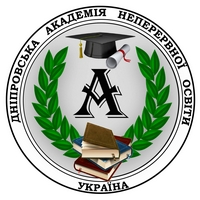FORMATION OF COMPETENCE IN THE BASICS OF RADIATION SAFETY FOR BACHELORS OF SECONDARY EDUCATION: THEORETICAL AND PRACTICAL ANALYSIS
Abstract
The article is devoted to the study of the current state of theoretical and practical development of the problem of forming competence in the basics of radiation safety for bachelors of secondary education. In particular, the main leitmotifs of the international scientific and pedagogical community on this topic are studied. Three directions of research on the formation of competence in radiation safety of bachelors of secondary education are distinguished, namely: content and axiological, organizational and methodological directions and mechanisms of cooperation of interested authorities. It has been recorded that the vast majority of studies are driven by radiation accidents at nuclear facilities. The analysis of «negative» experience allows us to identify risks and focus educational impact on them. In some cases, a preventive approach to exposure to low doses of ionizing radiation in everyday life was studied. A number of studies have been identified that focus on the effectiveness of cooperation between educational institutions and specialized organizations in the field of nuclear energy use and radiation safety. Among the most extraordinary models are the following: «socio-pedagogical problem (educational institutions) – technical support (service organization) –- expert assessment (regulatory authority)», «man-made accident – social problem – public involvement – formation of basic safety competencies – implementation of collective terms of reference» and «comprehensive public and governmental discussion». Analyzing the current state of research on the formation of competence in the basics of radiation safety of bachelors of secondary education, a number of little-studied aspects have been identified, namely: there is no unanimity in the requirements for the content of teaching RSB; the content and scope of RSB training for secondary school teachers of different subject areas remain unclear; the issue of formal regulation of ways to ensure the formation of competence in the basics of RSB remains controversial; there are no clear organizational and pedagogical approaches to organizing the formation of competence in the basics of RSB; there are no clear organizational and pedagogical approaches to the formation of competence in the basics of RSB.
References
2. Anjos R. M., et al. Radioactivity teaching: Environmental consequences of the radiological accident in Goiânia (Brazil). American Journal of Physics. 2001. V. 69. 3. P. 377–381.
3. Brown Azby, et al. Safecast: successful citizen-science for radiation measurement and communication after Fukushima. Journal of Radiological Protection. 2016. V. 36. 2. 82 p.
4. Coldwell T., et al. The status of the radiation safety culture within the higher education, research and teaching sectors in the UK. Journal of Radiological Protection. 2020. V. 40. 4. 1406 p.
5. Dauer Lawrence T. Facilitating effective radiation safety workshops: Adult learning theories. Health Physics. 2003. V. 85. P. 49–55.
6. Furuta Etsuko, Kusama Keiji. Teaching materials for radiation training and user guides. Radiation Safety Management. 2014. V. 13. 1. P. 1–8.
7. Hachiya Misao, Akashi Makoto. Lessons learned from the accident at the Fukushima Dai-ichi nuclear power plant – more than basic knowledge: education and its effects improve the preparedness and response to radiation emergency. Radiation protection dosimetry. 2016. V. 171. 1. P. 27–31.
8. Johnson JR. R. R. Effective Presentation of Radiation Safety Traininng – Risk Communication: An Important Function of Radiation Safety Training. Health physics. 1999. V. 76. P. 10–15.
9. Metcalfe R. D., et al. A web-based resource for radiation safety courses. In: Proceedings of The Australian Conference on Science and Mathematics Education. 2002. P. 90.
10. Popp Andrew, Paneras Tina, Dowler Rod. Enhancing radiation safety in Australia through applied training and outreach. 2017. P. 72.
11. Ranasinghe Nirodha, et al. Development of radiation literacy among secondary school students in SRI LANKA. Journal of Environment and Safety. 2019. V. 10. 2. P. 37–40.
12. Tekbiyik Ahmet, et al. The use of jigsaw collaborative learning method in teaching socio-scientific issues: The case of nuclear energy. Journal of Baltic Science Education. 2015. V. 14. 2. P. 237–253.
13. Wojcik Andrzej, et al. Educating about radiation risks in high schools: towards improved public understanding of the complexity of low-dose radiation health effects. Radiation and Environmental Biophysics. 2019. V. 58. P. 13–20.
14. Kostadinova B., et al. Implementation of radioecological education in secondary school by a'Radiation and man'elective course. 2004. P. 1–16.

 ISSN
ISSN  ISSN
ISSN 

